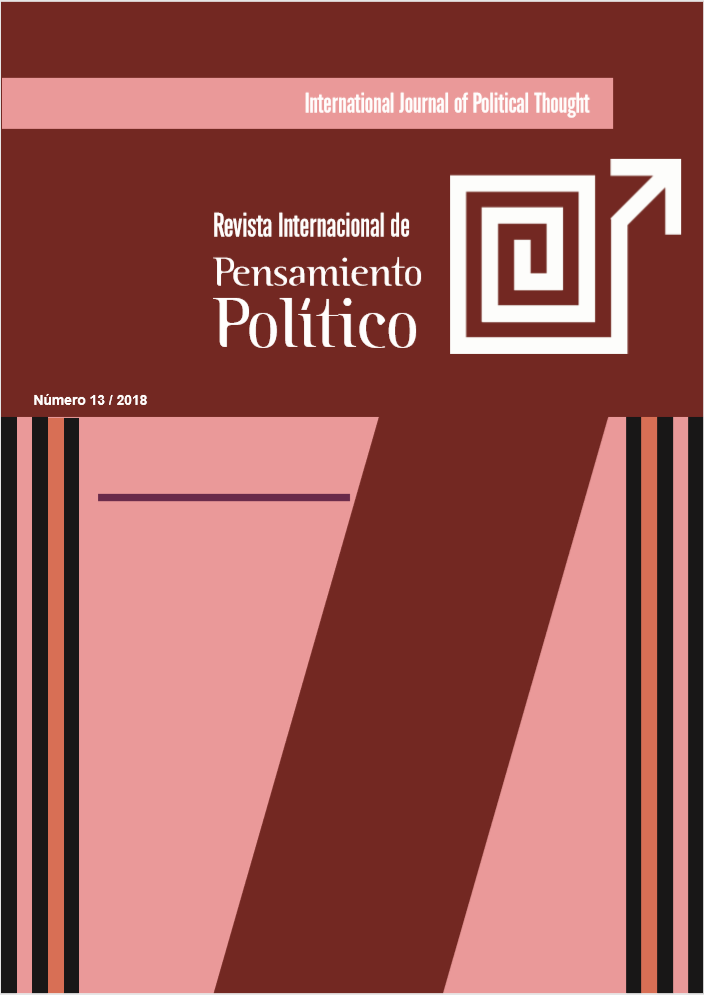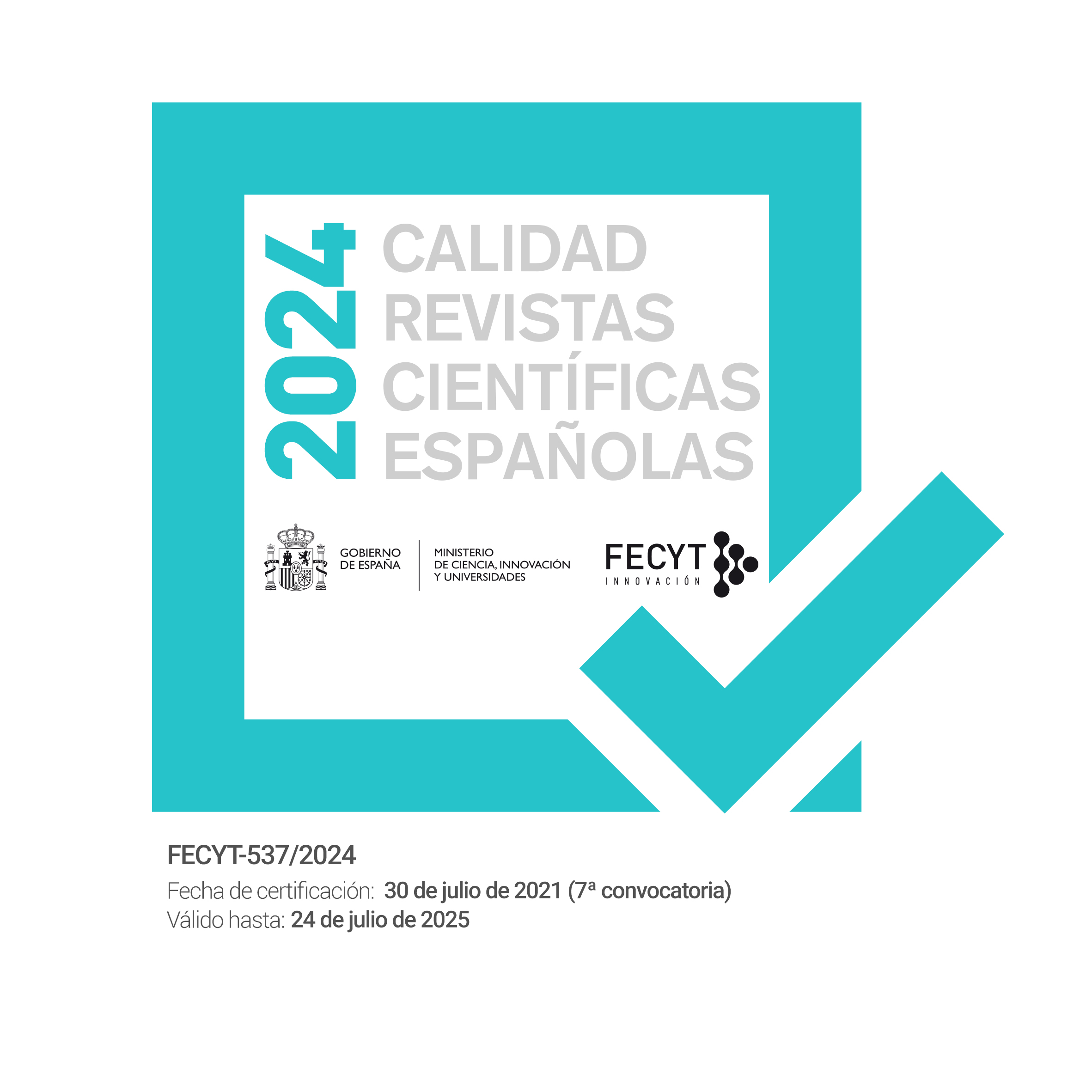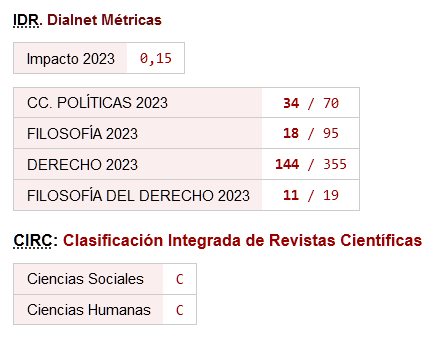Evaluación del impacto de la educación de género en el sexismo: evidencia de los estudiantes universitarios en Madrid
DOI:
https://doi.org/10.46661/revintpensampolit.4094Keywords:
Ambivalent sexism, gender, college students, education, preventionAbstract
The goal of this study is to evaluate the impact of gender education on the level of ambivalent sexism in Madrid college students. To achieve this goal, we study a sample of 280 students from the Universidad Rey Juan Carlos in Madrid (220 women and 60 men). 126 are students majoring in Criminology who had received 60 hours of gender education. 154 are students majoring in Nursing who received no gender education. We chose students in Criminology and Nursing because their professional practice is linked to gender violence. The methodology consisted of applying the Scale for Detection of Sexism in Adolescents. The results show that students who learned about gender are less sexist. Of the students with gender education, women are less sexist. Our study is action-oriented research in that it provides information useful for professionals interested in creating actions to prevent sexism among college students.
Downloads
References
Argimon, J. M., & Jiménez, J. (2004). Métodos de investigación clínica y epidemiológica. Métodos de investigación clínica y epidemiológica.
Arriaga Flórez, M., Martín Clavijo, M. & Marín Conejo, S. (2015). Lenguaje y género: aproximaciones desde un marco teórico. Universidad de Sevilla.
Becker J. C., Swim J. K. (2011). Seeing the unseen: Attention to daily encounters with sexism as a way to reduce sexist beliefs. Psychology of Women Quarterly, 35, 227–242.
Calder-Dawe, O. (2015). The choreography of everyday sexism: Reworking sexism in interaction. New Formations, 86(86), 89-105.
Crowne, D.P. & Marlowe, D. (1960): “A new scale of social desirability independent of psychopathology”, Journal of Consulting Psychology, 24, 349-354.
Cuadrado, I., Recio, P., y Ramos, E. (2007): “Propiedades psicométricas de la escala de detección de sexismo en adolescentes, DSA”, Psicothema, Vol. 19, N. 3: 522-528.
Durá, A; Garaigordobil, M (2006). “Neosexismo en adolescentes de 14 a 17 años: relaciones con autoconcepto, autoestima, personalidad, psicopatología, problemas de conducta y habilidades sociales”, Clínica y Salud, Vol. 17, N. 2, 127-149.
Echeburúa, E., y Fernández-Montalvo, J. (1998): “Hombres maltratadores”, in E. Echeburúa, y P. Corral (Eds.), Manual de violencia familiar (pp: 73-90), Siglo XXI. Madrid, España.
Echeburúa, E.; Amor, P.J.; Sarasua, B.; Zubizarreta, I.; Holgado-Tello, F.P. (2016): “Inventario de Pensamientos Distorsionados sobre la Mujer y el Uso de la Violencia Revisado (IPDMUV-R): propiedades psicométricas”, Anales de psicología, Vol. 32, nº 3: 837-846.
Expósito, F; Moya, M.C; and Glick, P. (1998): “Sexismo ambivalente: medición y correlatos”, Revista de Psicología Social, 13: 159-169.
Expósito, F; Moya, M.C; and Glick, P. (2014):“Ambivalentsexism: Measurement and correlates”, International Journal of Social Psychology, Vol. 13, 1998 Issue 2: 159-169.
Ferrando, P.J. and Chico, E. (2000): “Adaptación y análisis psicométrico de la escala de deseabilidad social de Marlowe y Crowne”, Psicothema, Vol. 12, N. 3: 383-389.
Ferrer VA, Bosch E, Ramis MC, Torres G, Navarro C (2006) La violencia contra las mujeres en la pareja: creencias y actitudes en estudiantes universitarios. Psicothema; 18(3): 359-66.
Garaigordobil, M., & Aliri, J. (2011). Sexismo hostil y benevolente: relaciones con el autoconcepto, el racismo y la sensibilidad intercultural. Revista de Psicodidáctica, 16 (2), 331-350.
Glick, P. y Fiske, S. T. (2011): “Ambivalent Sexism Revisited”, Psychology of Women Quarterly, Vol 35, Issue 3: 530–535.
Glick, P. y Fiske, S. T. (1996): “The Ambivalent Sexism Inventory: Differentiating Hostile and Benevolent Sexism”, Journal of Personality and Social Psychology, 70: 491-512.
Lameiras, M., & Rodríguez, Y. (2002). Evaluación del sexismo moderno en adolescentes. Revista de Psicología Social, 17(2), 119-127.
McConahay, J. B. (1986): “Modern racism”. In J. F. Dovidio & S. L. Gaertner (Eds.), Prejudice, discrimination, and racism (pp. 91–125), New York, NY: Academic Press.
Potter, A. (2008): Gender Sensitivity: nicety or necessity in peace-process management? The Oslo Forum Network of Mediators.
Recio, P; Ramos, E; Cuadrado, I; (2007). Propiedades psicométricas de la Escala de Detección de Sexismo en Adolescentes (DSA). Psicothema, 522-528.
Sayman, D.M. (2007): “The Elimination of Sexism and Stereotyping in Occupational Education”, The journal of Men’s Studies, Vol 15, Issue 1, 2007.
Shields, S. A. (2007). Passionate men, emotional women: Psychology constructs gender difference in the late 19th century. History of Psychology, 10(2), 92-110.
Swim, J. K., Aikin, K. J., Hall, W. S., and Hunter, B. A. (1995): “Sexism and racism: Old-fashioned and modern prejudices”, Journal of Personality and Social Psychology, 68: 199-214.
World Medical Association-WMA (2013). Declaration of Helsinki: ethical principles for medical research involving human subjects, version of 2013, (https://www.ncbi.nlm.nih.gov/pubmed/24141714). DOI: 10.1001/jama.2013.281053 Consultation 03/04/2017.
Downloads
Published
How to Cite
Issue
Section
License

This work is licensed under a Creative Commons Attribution-NonCommercial-ShareAlike 4.0 International License.
Open access policy
Free and open access is allowed to any interested party to all the contents of the journal issues, free of charge, being able to print and transfer all the articles, with the only condition of specifying the source and authorship.
The journal: a) does not charge authorship costs for the processing of articles or for their submission, b) maintains copyright for authors without restrictions, c) facilitates authors to keep their publication rights without limitations.
The International Journal of Political Thought is an original work of the Laboratory of Political Ideas and Practices of the Pablo de Olavide University. All articles included in the Journal are original work of their respective authors. This Journal is freely offered to the scientific and academic community at no cost and releases the contents according to the license "Attribution-NonCommercial-ShareAlike 4.0 CC BY-NC-SA" of the Creative Commons project available in the following url: https://creativecommons.org/licenses/by-nc-sa/4.0/legalcode
If you wish to translate or compile any of the articles available here, please contact us at contacto













 ISSN: 1885-589X
ISSN: 1885-589X  Universidad Pablo de Olavide
Universidad Pablo de Olavide